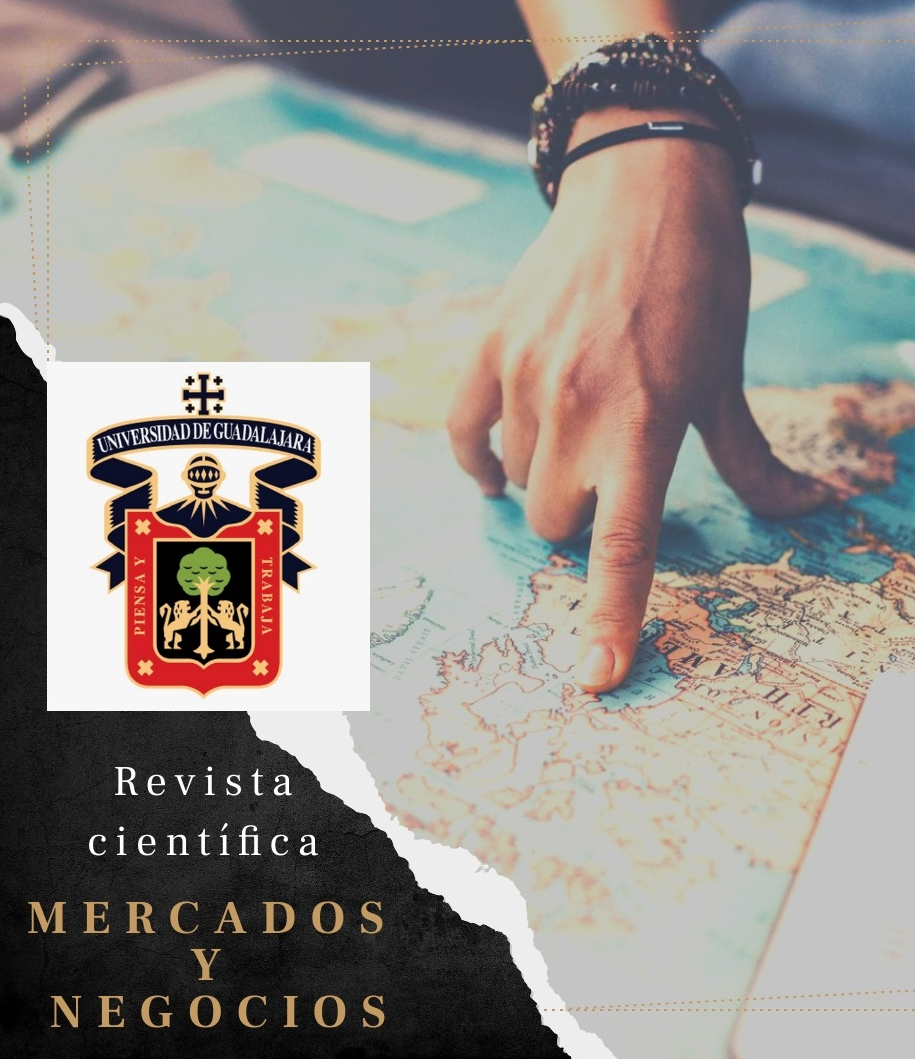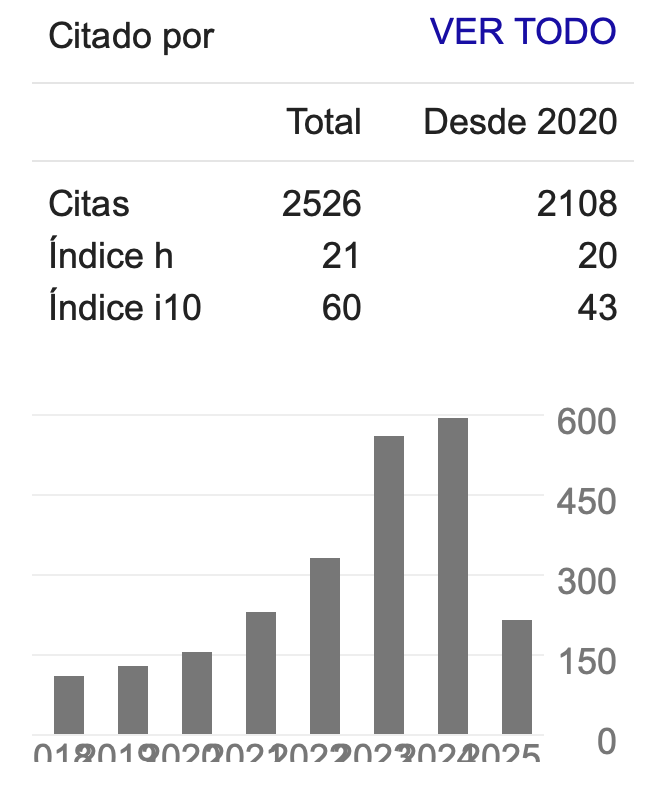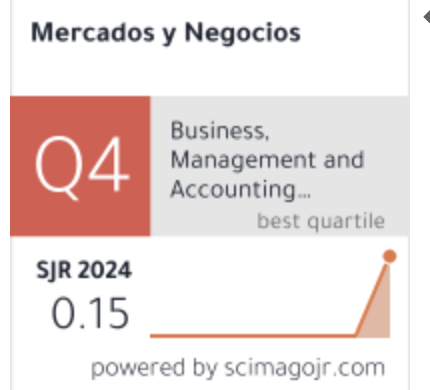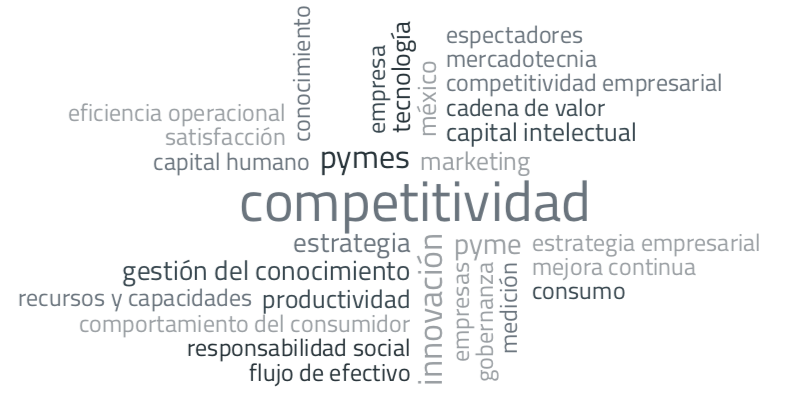Calidad y alianzas estratégicas para la competitividad internacional: Grupo LEGO
DOI:
https://doi.org/10.32870/myn.v0i38.7179Keywords:
Alianzas estratégicas, calidad del producto, competitividad internacional, LEGO.Abstract
En el presente documento, se analiza la competitividad internacional de LEGO Group en relación con la calidad del producto y las alianzas estratégicas internacionales. Se presentan diferentes teorías que comprueban la relación entre las variables involucradas. Se incluye el análisis empírico que refuerza el contenido de la investigación. De acuerdo a los resultados, se obtuvo que la calidad del producto es resultado de los estándares y el desempeño acorde a la normatividad internacional. Las alianzas estratégicas en distintos mercados influyen positivamente en la competitividad de LEGO Group. Los hallazgos del estudio cuentan con diversas implicaciones en la práctica dentro de la industria manufacturera. Estos últimos aplican para las estrategias que elevan la competitividad de otras compañías alrededor del mundo.References
Antoñanzas, F. (2005). Artistas y Juguetes. Recuperado Marzo 30, 2017, del Sitio Web de Universidad Complutense de Madrid, Facultad de Bellas Artes: http://biblioteca.ucm.es/tesis/bba/ucm-t28496.pdf
Armstrong, G., & Kotler, P. (2015). Marketing: An introduction. Inglaterra: Pearson.
Arteaga, J. (2014). ¿A qué le apuesta Hasbro en el mercado de los juguetes?. Recuperado del sitio web de Forbes México: https://www.forbes.com.mx/que-le-apuesta-hasbro-en-el-mercado-de-los-juguetes/
Atiyah, L. (2016). Product’s quality and its impact on customer satisfaction: a field study in diwaniyah dairy factory. Comunicación presentada en 10th International Management Conference. 3-4 de febrero. Challenges of Modern Management: Bucharest, Romania, 57-65. Recuperado del Sitio: http://conferinta.management.ase.ro/archives/2016/PDF/1_7.pdf
Bloomberg. (2016). Estados Clave Lego A/S, Mattel Inc & Hasbro Inc 01/01/2010 to 01/01/2016. Recuperado el 15 de Octubre de 2017 del Sitio web de Bloomberg database.
Brand Finance. (2017). Brand Finance annual report. Scotland: Brand Finance
Cateora, P., Gilly, M., & Graham, J. (2014). International Marketing. Estados Unidos: Mc Graw Hill.
Czinkota, M., & Ronkainen,I. (2008). Marketing Internacional. México: Grupo Art Graph.
Dyer, J. H., & Singh, H. (1998). The relational view: Cooperative strategy and sources of interorganizational competitive advantage. Academy of management review, 23(4), 660-679.
Dunk, A. (2007). Assessing the Effects of Product Quality and Environmental Management Accounting on the Competitive Advantage of Firms. Finance Journal University of Wollongong Australia, 1, pp. 26-38.
Echevarrí, D. (2007). La competitividad en el desarrollo empresarial. Chile: Universidad de San Buenaventura.
El economista. (2017). México, pieza clave para el crecimiento de Lego en América. El Economista. Link http://eleconomista.com.mx/industrias/ 2017/04/06/mexico-pieza-clave-crecimiento-lego-america
Euromonitor International. (2017, Junio). Traditional Toys and Games in México. Link: //www.portal.euromonitor.com/portal/?GNT6irtVk%2bIb5urW4vOqEA%3d%3d
Expansión. (2016). Lego ganó un 2% menos y prepara un plan de inversiones para impulsar su negocio. Expansión. Link: http://www.expansion.com/empresas/distribucion/2016/09/06/57ced2e3ca474106218b467b.html
Frynas, J., & Mellahi, K. (2011). Global Strategic Management. Estados Unidos: Oxford.
García, R., González, J., & Jornet. (2010). SPSS: Análisis de Fiabilidad. Valencia: Universat de Valencia.
Guasch, J., Racine, J., Sánchez, I., & Diop, M. (2007) Quality Systems and Standards for a Competitive Edge. New York: World Bank.
Hernández, K. (2015). Mercado de juguetes crece con Millennials. El Economista Link: https://www.eleconomista.com.mx/empresas/Mercado-de-juguetes-crece-con-Millennials-20151223-0031.html
Hitt, M., Ireland, D., & Hoskisson, R. (2008). Strategic Management. México: Thomson.
Intellectual Property Office. (2014) Licensing Intelectual Property. Londres: Intellectual Property Office. Link: https://www.gov.uk/guidance/licensing-intellectual-property
Ireland, R. D., Hitt, M. A., & Vaidyanath, D. (2002). Alliance management as a source of competitive advantage. Journal of management, 28(3), 413-446.
Jiménez, A. (2012). Las alianzas empresariales: estrategia necesaria para la incorporación de las empresas en la era del acceso. Comuni@ cción-Revista de Investigación en Comunicación y Desarrollo, 3(1), 17-25.
Jin, B., & Moon,H. (2006). The diamond approach to the competitiveness of Korea's apparel industry: Michael Porter and beyond. Journal of Fashion Marketing and Management: An International Journal, 10 (2), 195-208. Doi.org/10.1108/ 13612020610667504
Khan, L., & Ahmed, R. (2012). A Comparative Study of Consumer Perception of Product Quality: Chinese versus Non-Chinese Products. PJETS, 2 (2), 118-143.
Kharub, M., & Sharma, R. (2017). Comparative analyses of competitive advantage using Porter diamond model (the case of MSMEs in Himachal Pradesh). Competitiveness Review: An International Business Journal, 27 (2), 132-160. https://doi.org/10.1108/CR-02-2016-0007
Kim, Y. (2013). Choice of foreign licensees: information and communication technology firms. Industrial Management & Data Systems, 113, 1300-1314. https://doi.org/10.1108/ IMDS-03-2013-0159
Klint, M., & Sjöberg, U. (2003). Towards a comprehensive SCP‐model for analysing strategic networks/ alliances. International Journal of Physical Distribution & Logistics Management, 33, 408-426. https://doi.org/10.1108/ 09600030310481988
Kotler, P., & Armstrong, G. (2012) Marketing. México: Pearson.
Kotler, P., & Keller, K. (2006). Dirección de Marketing. México: Pearson.
Kumar, S., & Suresh, N. (2006). Production and operations management. New Age International.
Lajara, B., & Lillo, F (2004). SMEs and supplier alliances use: an empirical analysis. Supply Chain Management: An International Journal, 9 (1), 71-85. https://doi.org/10.1108/13598540410517593
Lamb, C., Hair, J., & McDaniel, C. (2009). The essentials of marketing. McGraw-Hill/Higher Education
LEGO. (2005). Annual Report 2004 Lego Group. Annual Report Lego, 1-54
LEGO. (2016). The lego group a short presentation. Recuperado del Sitio web de Lego: https://www.lego.com/es-es/aboutus/medialibrarydetails/the-lego-group---a-short-presentation-ab25208ba84f4fa596d94a684569f06f
LEGO. (2016b). The LEGO Group History. Recuperado del Sitio web de Lego: https://www.lego.com/es-es/aboutus/lego-group/the_lego_history/2010
LEGO (2016c). Responsibility Report 2016. Link: https://www.lego.com/en-gb/aboutus/lego-group/annual-report?ignorereferer=true
LEGO. (2017a). La historia de LEGO. Recuperado del Sitio web de Lego: https://www.lego.com/es-es/aboutus/lego-group/the_lego_history
LEGO. (2017b). Legal Notice. Recuperado del Sitio web de Lego: https://www.lego.com/en-US/legal-notices
Linton, I. (2017). Why Is Quality Important for a Business?. Chron. Link: http://smallbusiness.chron.com/important-businesses-practice-quality-control-69340.html
Maram, L. (2015) LEGO: Caso de Éxito en Marketing, ¡Todo es increíble!. Marketing de Inspiración. Link: https://www.luismaram.com/lego-caso-de-exito-en-marketing-todo-es-increible/
Mazo, E. (10 de julio de 2013). Muerte y resurrección de LEGO. Expansión. Recuperado del Sitio web: http://www.expansion.com/2013/07/09/directivos/1373385611.html
Melo, C. (2001). Towards an institutional theory of the dynamics of industrial networks. Journal of Business & Industrial Marketing, 16, 150-166. https://doi.org/10.1108/08858620110389777
Moon H., & Lee, D. (2004). The Competitiveness of Multinational Firms: A Case Study of Samsung Electronics and Sony. Journal of International and Area Studies, 2 (1), 1-21.
Mzembi, S. (1999) The Competitive Advantage of Nations: An Exposition of the Limitations of the Single Nation ‘Diamond’ Theory in the Case of Zimbabwe’s Exports to the OECD and South Africa Markets. (Tesis doctoral, University of Leicester).
Navarro, F. (2016). La Gestión de Calidad Total (TQM). Inesem Business Schoool. Link: https://revistadigital.inesem.es/gestion-integrada/la-gestion-de-la-calidad-total-tqm/
Netland, T., & Sánchez, E. (2014). Effects of a production improvement programme on global quality performance: The case of the Volvo Production System. The TQM Journal, 26 (2), 188-201. https://doi.org/10.1108/TQM-03-2012-0023
Observatorio de Corporaciones Transnacionales. (2005). La industria de los juguetes. Link: http://comerciojusto.org/wpcontent/uploads/ 2011/12/B11_OCT_Juguetes.pdf
Parc, J & Moon, H. (2013). Korean Dramas and Films: Key Factors of Their International Competitiveness. Asian Journal of Social Science, 41, 126-149
Patlán, J., & Delgado, D. (2007). Determinantes de competitividad de la industria del vestido: modelo del Diamante de Porter y modelo del Doble diamante. México: Red Internacional de Investigadores en Competitividad, 1(1).
Peña, J., Cepeda, G. & Chin, W. (2012). Effect of ITC on the international competitiveness of firms. Management Decision, 50 (6), 1045-1061.
Pucik, V. (1988). Strategic alliances, organizational learning, and competitive advantage: The HRM agenda. Human Resource Management, 27(1), 77-93.
Rai Technology University. (2003). Total Quality Management. Rai Technology University. Link: http://164.100.133.129:81/eCONTENT/Uploads/Total_Quality_Management.pdf
Real Academia Española. (2017). Diccionario de la Real Academia Española. Madrid: RAE.
Reforma. (04 de febrero de 2016). Analizan Hasbro y Mattel posible fusión. Reforma Link: http://busquedas.gruporeforma.com/elnorte/Documento/Web.aspx?id= 1647814|ArticulosCMS&tit=Analizan+Hasbro+y+Mattel+posible+fusi%f3n&text=mattel&url=
Reforma. (12 de marzo de 2017). Ignora Lego amenazas de Trump. Reforma. Link: http://busquedas.gruporeforma.com/elnorte/ Documento/Web.aspx?id=2284265|ArticulosCMS&tit=Ignora+Lego+amenazas+de+Trump%2c+por+ahora&text=mattel&url=
Rude, R. (2015). El grupo lego amplía sus fábricas para proporcionar experiencias de juego a un número aún mayor de niños. Link: https://www.lego.com /es-es/aboutus/news-room/2015/october/factory-expansion
Rugman, A., Hoon, C., & Lim, D. (2012). The regional and Global Competitiveness of Multinational Firms. Journal of the Academy of Marketing Science, 40 (2), 218-235.
Sambasivan, M., & Yen, C. (2010) Strategic alliances in a Manufacturing Supply Chain: Influence of Organizational Culture from the Manufacturer’s Perspective. International Journal of Physical Distribution & Logistics Management, 40, 456-474. https://doi.org/10.1108/09600031011062191
Sandgaard, M. (2012). Calidad y seguridad de los productos. Link:
https://www.lego.com/es-ar/aboutus/lego-group/product-quality-and-safety
Serrano, L. (2013) Competitividad Internacional: Un Enfoque Empresarial. Colombia: Fundación Universitaria Konrad Lorenz, Semillero de Investigación de la Escuela de Negocios. Link: http://www.konradlorenz.edu.co/images/publicaciones/ suma_negocios_working_papers/2013-v2-n2/01-competitividad.pdf
Sheppard, J. (2016). Case Synopsis: The LEGO Group. Simon Fraser University. Link: http://docplayer.net/44603410-Bus-478-d-300-case-synopsis-the-lego-group-dr-jerry-sheppard-wen-ting-fan-joel-bradsen-fiona-zhu-chester-wong.html
Siudek, T & Zawojska, A. (2014). Competitiveness in the economic concepts, theories and empirical research. (Informe 91-108). Warsaw University of Life Sciences, Acta Scientiarum Polonorum Oeconomia. Link: http://yadda.icm.edu.pl/yadda/ element/bwmeta1.element.agro-b3b94eea-5c1c-4805-9a76-c82799727548/c/91-108.pdf
Smit, A. (2010). The competitive advantage of nations: is Porter’s Diamond Framework a new theory that explains the international competitiveness of countries?. African Journals Online, 14(1).
Sutherland, B. (2016). Hasbro and Mattel Talk Monopoly. Bloomberg Gadfly. Link: https://www.bloomberg.com/gadfly/articles/2016-02-04/mattel-and-hasbro-merger-possibilities
Tansel, U. (2015). Lego tightens its grip on global construction toys. Euromonitor International. Link: http://blog.euromonitor.com/2015/02/lego-tightens-its-grip-on-global-construction-toys.html
The Statistics Portal. (2016). Worldwide revenue of major toy companies in 2016. Recuperado del Sitio web de The Statistics Portal: https://www.statista.com/statistics/241241/revenue-of-major-toy-companies-worldwide/
Treviño, R. (2017). Apoyo para tesis UDEM. Entrevistador: Jessica González. Universidad de Monterrey. México.
Vicéns, J., Herrarte, A., & Medina, E. (2005). Análisis de la Varianza (ANOVA). Recuperado del Sitio web de Universidad Autónoma de Madrid: http://www.uam.es/departamentos/ economicas/econapli/anova.pdf
Viederyte, R., & Didziokas, R. (2014). Cluster models, factors and characteristics for the competitive advantage of lithuanian maritime sector. Economics and management, 19(2). Recuperado del Sitio web de University of Klaipeda: http://ecoman.ktu.lt/ index.php/Ekv/article/viewFile/4197/4257
Wang, M., Wang, S., Wang, S., Lee, H., Hong, S., Wang, S., Huang, T., & Chen, L. (2010). The Study of TQM Implementation and Competitiveness for High Technology Industries. EPPM2010 Conference. Taiwan: Engineering, Project, and Production Management.
Ybarra, J. A., Fuester, A., & Doménech, R. (2009). Tradición e innovación en la industria del juguete. La diversificación como estrategia. Economía industrial, (372), 99-113.
Yi Lo, F., Stepicheva, A., & Peng, T. (2016). Relational capital, strategic alliances and learning: In-depth analysis of Chinese-Russian cases in Taiwan. Chinese Management Studies, 10(1), 155-183. Link: https://doi.org/10.1108/CMS-04-2015-0090
Zaleckyte, G. (2016) Lego Strategic Decisions to Stay Competitive in the Market.
(Tesis de licenciatura). Aarhus University: School of Business and Social Sciences. Department of Economics and Business Economics. Aarhus, Dinamarca.
Downloads
Published
How to Cite
Issue
Section
License
Mercados y Negocios by Department of Mercadotecnia y Negocios Internacionales. University of Guadalajara is licensed under a License Creative Commons Attribution-NonCommercial 4.0 International.
The author retains the copyright.








